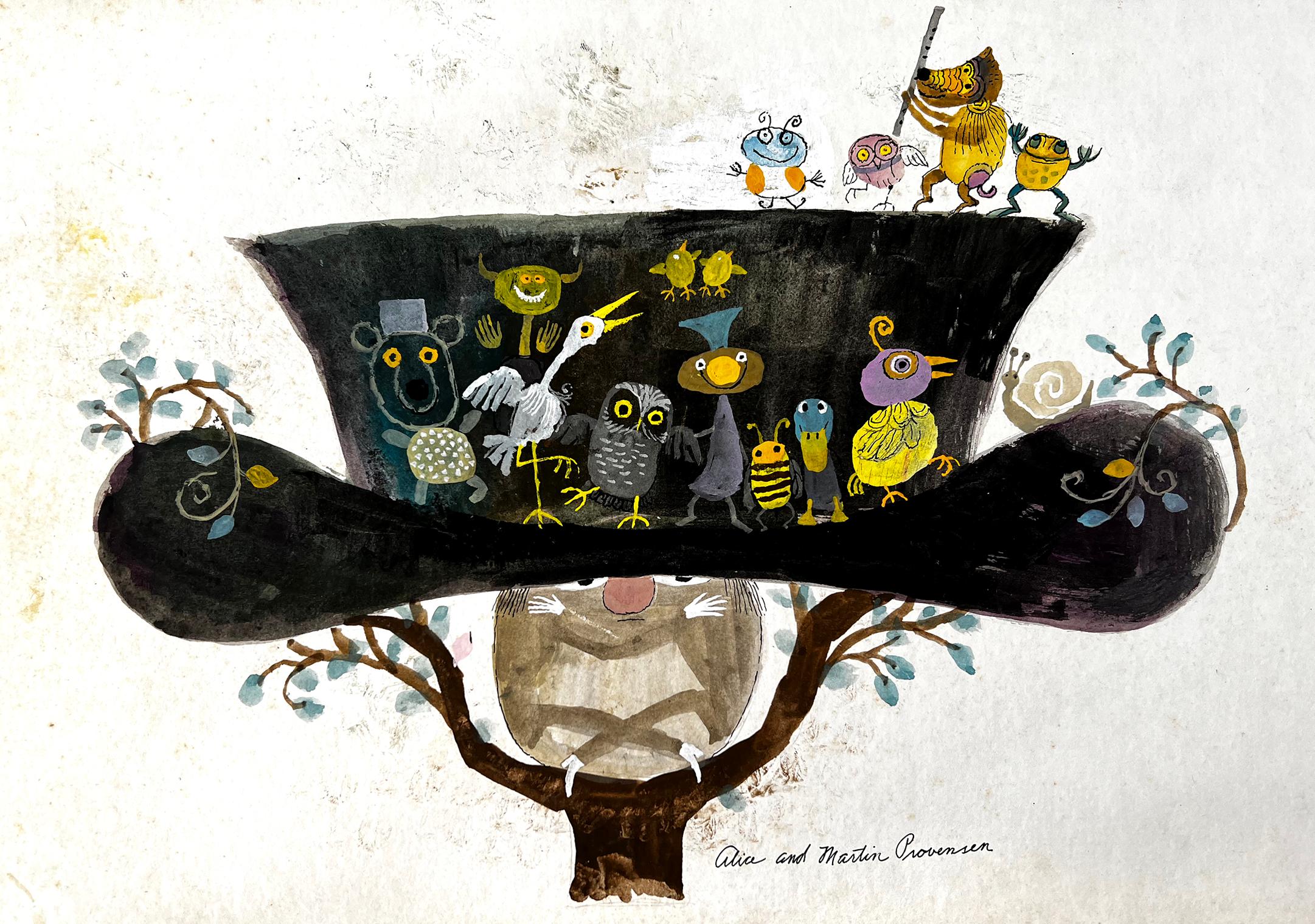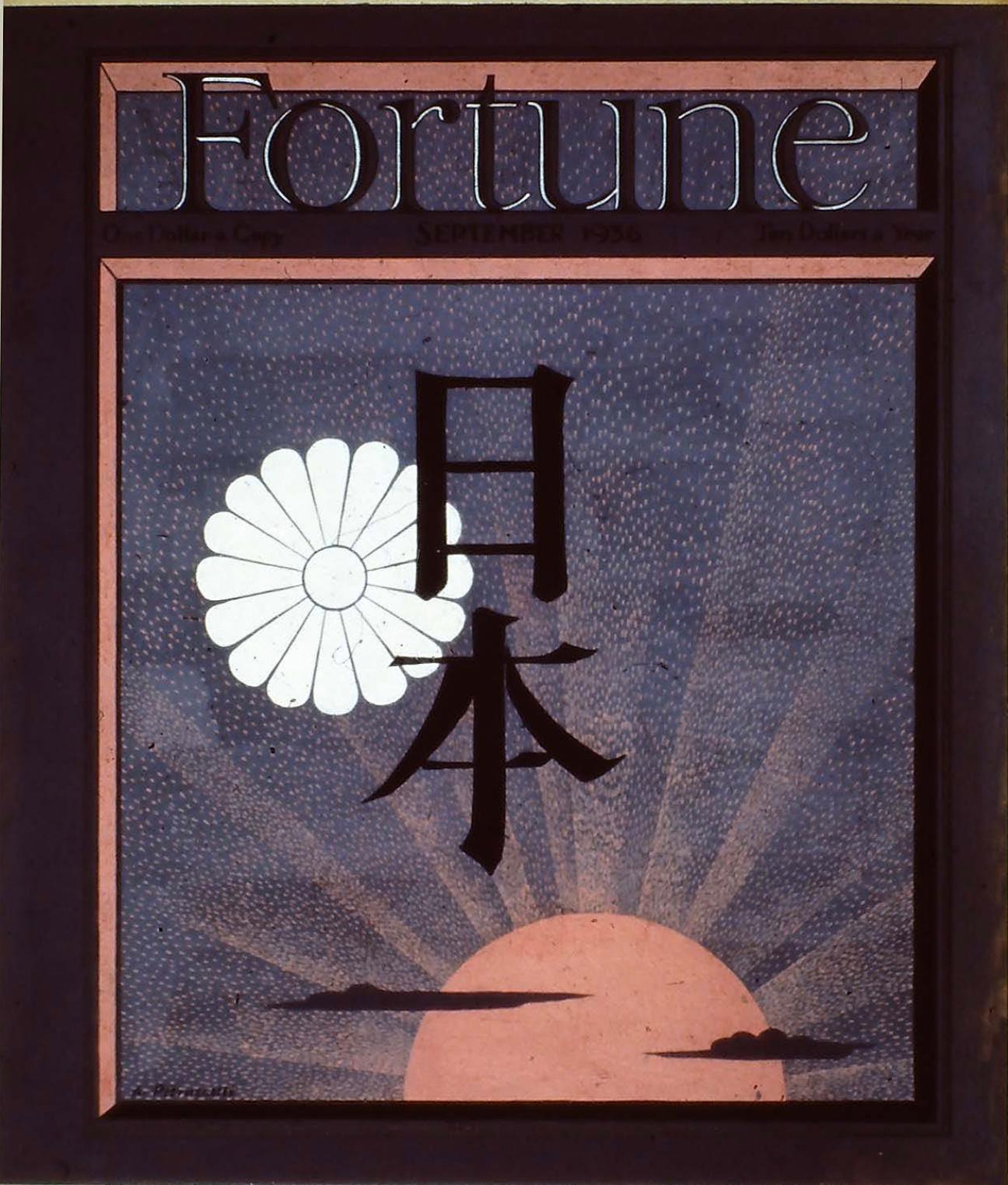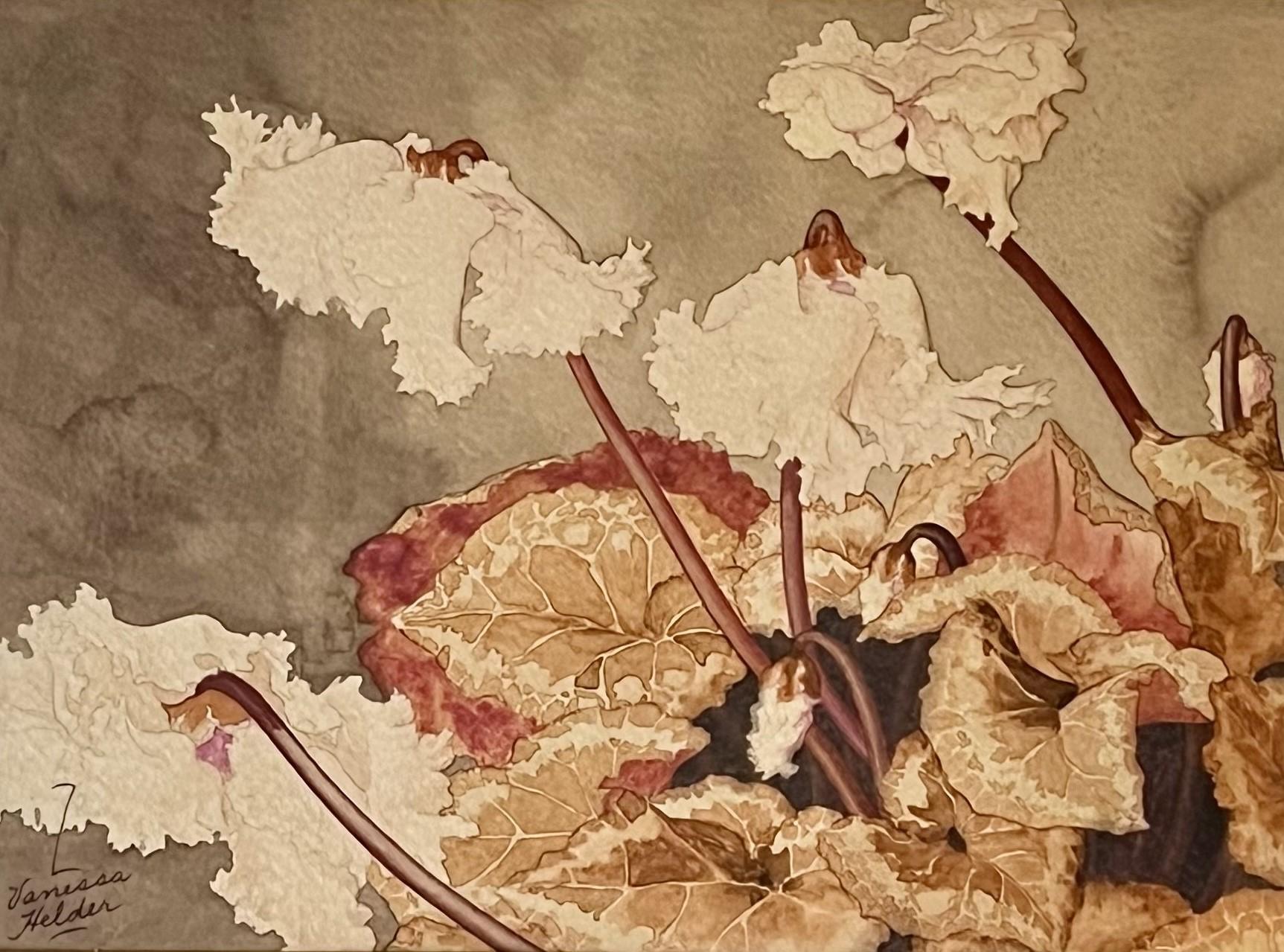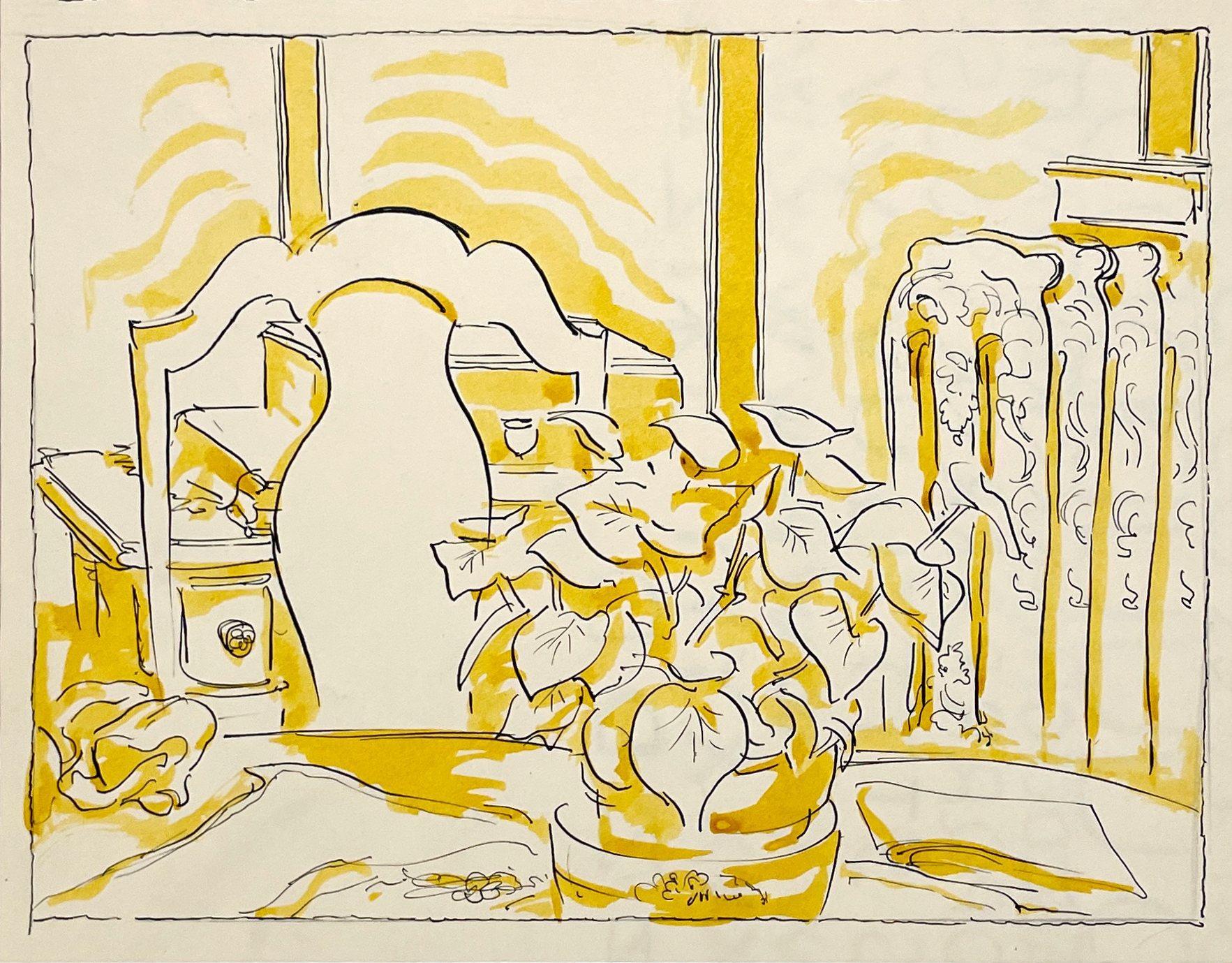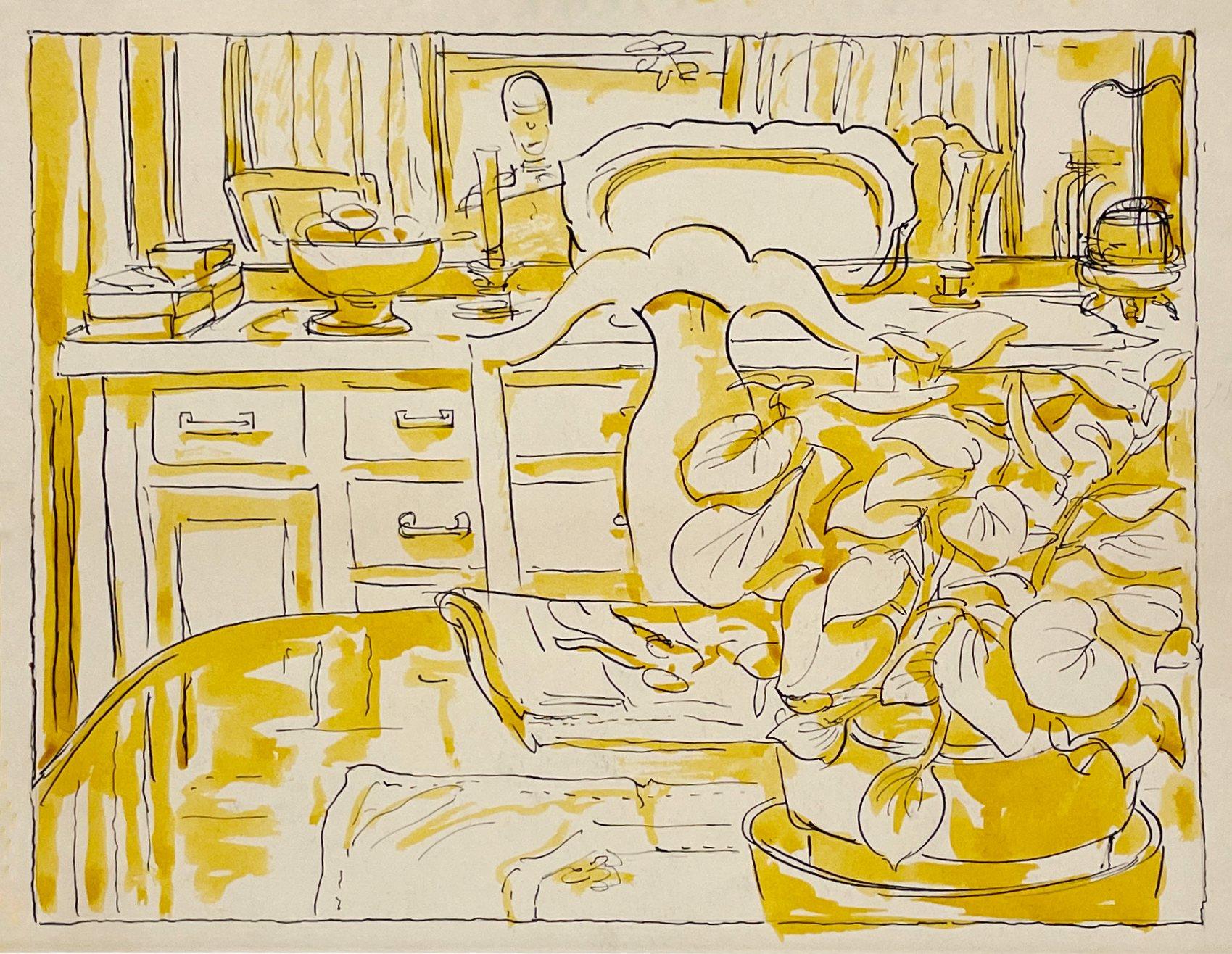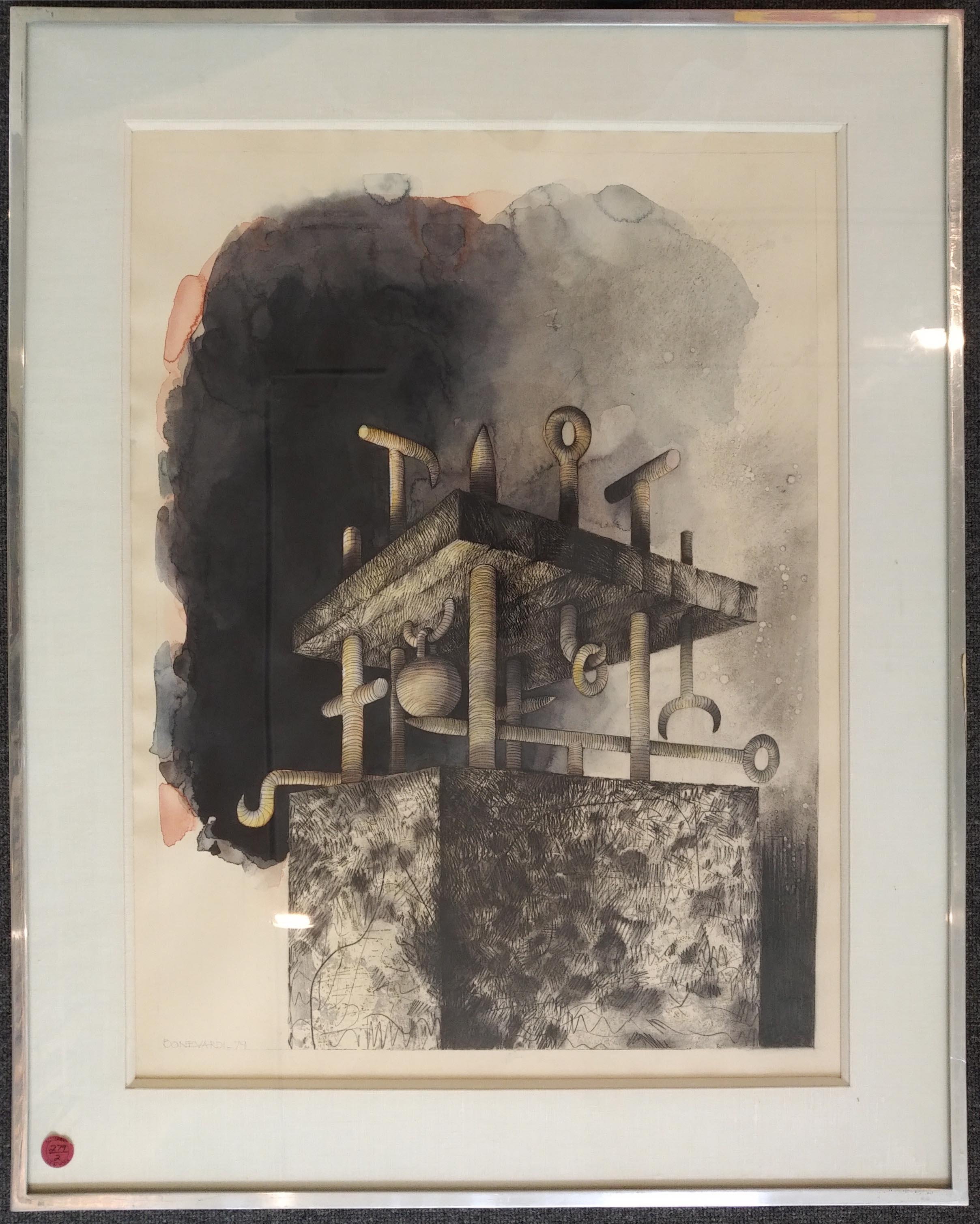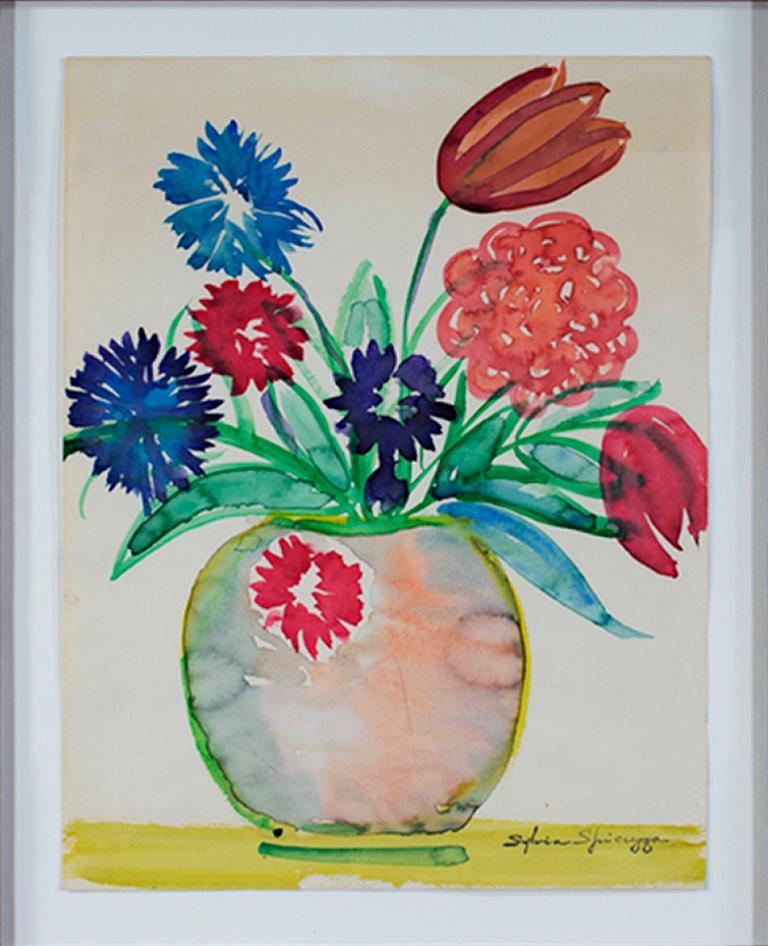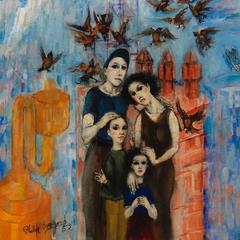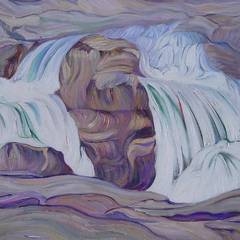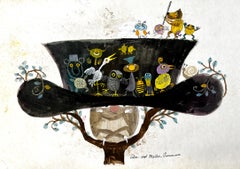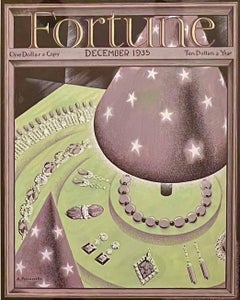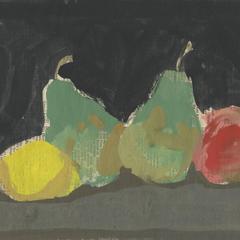
Lemon, Pears, and Apple on a Black Background
Want more images or videos?
Request additional images or videos from the seller
1 of 5
Robert KulickeLemon, Pears, and Apple on a Black Backgroundn.d.
n.d.
About the Item
- Creator:Robert Kulicke (1924-2007, American)
- Creation Year:n.d.
- Dimensions:Height: 6.75 in (17.15 cm)Width: 9.5 in (24.13 cm)
- Medium:
- Movement & Style:
- Period:
- Condition:
- Gallery Location:Concord, MA
- Reference Number:1stDibs: LU3541342763
Robert Kulicke
Born in 1924 Philadelphia
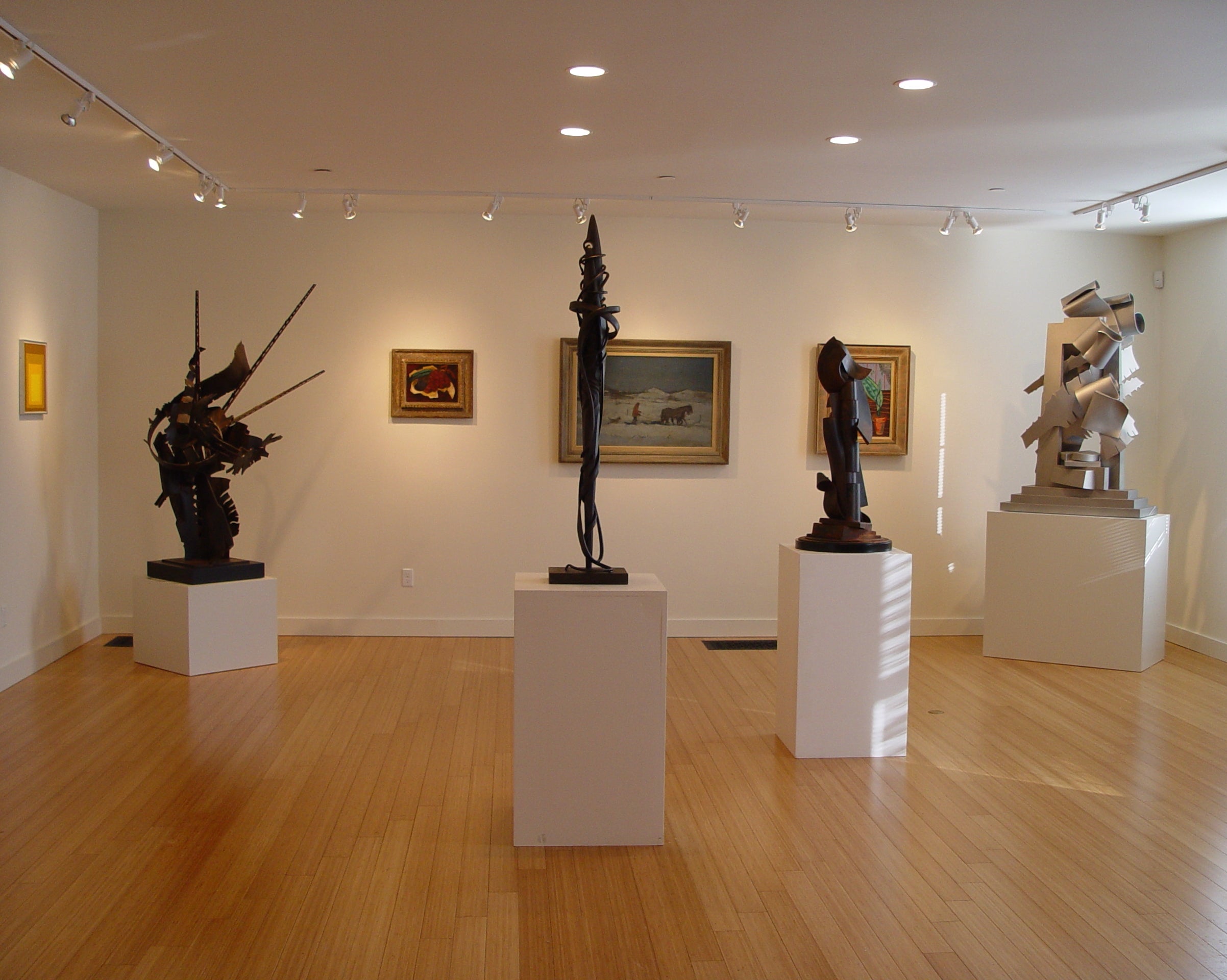
About the Seller
4.4
Vetted Seller
These experienced sellers undergo a comprehensive evaluation by our team of in-house experts.
Established in 1993
1stDibs seller since 2014
50 sales on 1stDibs
More From This SellerView All
- Still Life (double-sided)By Alfred Henry MaurerLocated in Concord, MAALFRED MAURER (1868-1932) Still Life (double-sided), n.d. Oil on board 22 x 13 ½ inches Signed verso: A. H. Maurer PROVENANCE Estate of Gaston Lachaise [Salander-O'Reilly...Category
1920s American Modern Still-life Paintings
MaterialsOil, Board
- Seeking a FutureBy Philip EvergoodLocated in Concord, MAPHILIP EVERGOOD (1901-1973) Seeking a Future, 1952 Oil on canvas 24 x 18 inches Signed and dated at lower left: Philip Evergood / 52 Heydenryk frame PROVENANCE Alfredo Valent...Category
1950s American Modern Figurative Paintings
MaterialsOil, Canvas
- Waterfall (Woodstock, New York)By Grace Hill TurnbullLocated in Concord, MAGRACE HILL TURNBULL (1880-1976) Waterfall (Woodstock, New York), c. 1925 Oil on canvas 14 x 20 inches Unsigned PROVENANCE The Maryland Historical Society The work of pai...Category
1920s American Modern Landscape Paintings
MaterialsCanvas, Oil
- The Red Shawl,By Arthur Beecher CarlesLocated in Concord, MAARTHUR BEECHER CARLES (1882-1952) The Red Shawl, n.d. Oil on canvas 21 ¼ x 18 ¼ inches Unsigned Framed Arthur B. Carles was born in Pennsylvania, and stu...Category
Early 20th Century American Modern Nude Paintings
MaterialsCanvas, Oil
- DandelionBy Naomi SavageLocated in Concord, MANAOMI SAVAGE (1927-2005) Dandelion, c.1960 Photo-engraving with painted additions on copper 4 3/8 x 3 ½ inches (plate) Inscribed on the reverse: Naomi Savage / (BK) / 1960? Naomi Savage was born in Jersey City, New Jersey in 1927. From a very early age, Naomi was interested in the arts. Her mother encouraged her to pursue music, and as the niece of famous Dada and Surrealist painter, sculptor, and photographer, Man Ray, she was able to pursue her interests with much support from her family. During high school, Naomi attended a class taught by Bernice Abbott, Man Ray's assistant in the 1920’s, at the New School for Social Research. She later attended Bennington College, where she studied music and the arts. Shortly after college, she traveled to California to study and apprentice with her uncle, Man Ray. Ray was a great inspiration to the young Naomi; he encouraged her to let her imagination create her art. Savage said later in her life that her strongest inheritance enriching her artistic career came from her uncle, Man Ray. "I never forgot his insightfulness," she said. "With him you could try anything - there was nothing you were told not to do, except spill the chemicals. With Man Ray, you were free to do what your imagination conjured and that kind of encouragement was wonderful". In 1950, Naomi married painter, sculptor, and architect, David Savage. Shortly after, the couple moved to Lambertville, New Jersey, residing there for three years before moving to Princeton, New Jersey. She had her first exhibition in 1952 at the Museum of Modern Art in New York City, and exhibited there again in 1960, 1966, and 1968. Her work can now be seen in the permanent collections of the Museum of Modern Art in New York, the Museum of Fine Arts in Boston, the International Center of Photography in New York, the Art Institute of Chicago, the Fogg Museum at Harvard University, and the Noyes Museum in Oceanville, New Jersey. Savage pioneered the use of photographic engravings for which she is best known. With a photographic engraving, the actual metal photographic plate itself is the art. It is described as a kind of topographic photograph with forms in three dimensions and with a variety of metallic surfaces and tones. Some of her most famous photographic engravings involve a series of portraits of her sister, which she manipulated in countless ways over many years. But her most famous photographic engraving (perhaps her most famous work of all) is a fifty-foot long mural she did on the side of the Lyndon B. Johnson Library and Museum in Austin, Texas. Her approach to photography represents an involvement with process as medium, and an interest in art as image manipulation, a pursuit shared by contemporaries like Robert Heinecken, Betty Hahn, and Bea Nettles...Category
1950s American Modern Mixed Media
MaterialsCopper
- Space TravelBy Philip PerkinsLocated in Concord, MAPHILIP PERKINS (1907-1970) Space Travel, 1945 Oil on canvas 10 x 8 ¼ inches Dated on canvas verso: 1945 Titled on stretcher bar: Space Travel Unsigned Philip Perkins was bor...Category
1940s American Modern Abstract Paintings
MaterialsCanvas, Oil
You May Also Like
- 'Fruit Still Life' original watercolor and gouache on board, signed YolandaLocated in Milwaukee, WIThough signed "Yolanda," the artist of this gouache and watercolor painting is unknown. The still life, contained and symmetrical, is dominated by the form of a pear. On either side,...Category
Early 20th Century American Modern Still-life Drawings and Watercolors
MaterialsGouache, Watercolor, Board
- Dancing Animal Critters on a Top Hat, Bear, Frog, Owl, Crane Bird, Bee, SnailBy Alice and Martin ProvensenLocated in Miami, FLEnter the whimsical world of famed children's book illustrators husband and wife team Alice and Martin Provensen. On top of a heavy tree trunk sits a...Category
1980s American Modern Animal Drawings and Watercolors
MaterialsGouache
- Original Painting Published Fortune Mag Cover 1935 Jewels Jewelry IllustrationBy Antonio PetruccelliLocated in New York, NYOriginal Painting Published Fortune Mag Cover 1935 Jewels Jewelry Illustration Antonio Petruccelli (1907 – 1994) Fortune cover published, Decembe...Category
1930s American Modern Still-life Paintings
MaterialsBoard, Gouache
- Japan Issue Fortune Magazine Cover Proposal Japanese Mid-Century IllustrationBy Antonio PetruccelliLocated in New York, NYJapan Issue Fortune Magazine Cover Proposal Japanese Mid-Century Illustration Antonio Petruccelli (1907 - 1994) JAPAN ISSUE Fortune cover proposal, c. 1936 14 1/4 x 12 inches (sight) Framed 19 3/4 X 17 3/4 Inches Gouache on board Signed lower left BIOGRAPHY: Antonio Petruccelli (1907-1994) began his career as a textile designer. He became a freelance illustrator in 1932 after winning several House Beautiful cover illustration contests. In addition to 24 Fortune magazine covers, four New Yorker covers, several for House Beautiful, Collier’s, and other magazines he did numerous illustrations for Life magazine from the 1930s – 60s. ‘Tony was Mr. Versatility for Fortune. He could do anything, from charts and diagrams to maps, illustrations, covers, and caricatures,’ said Francis Brennan, the former art director for Fortune. Over the course of his career, Antonio won several important design awards, designing a U.S. Postage Stamp Commemorating the Steel Industry and designing the Bicentennial Medal...Category
1930s American Modern Still-life Paintings
MaterialsBoard, Gouache
- Garden FlowersBy Charles DemuthLocated in New York, NYCharles Demuth was one of the most complex, talented, and deeply sensitive artists of the American modern period. Whether he was painting floral still lifes, industrial landscapes, or Turkish bathhouses, art was, for Demuth, fraught with personal meaning. A fixture of the vanguard art scene in New York, Demuth navigated the currents of Modernism, producing some of the most exquisite watercolors and original oil paintings in twentieth-century American art. Demuth was born in Lancaster, Pennsylvania, the only child of a well-to-do family. He had an awkward and introverted childhood shaped by a childhood illness, Perthes, a disease of the hip that not only left him permanently lame, but, as part of the “cure,” bedridden for two years in the care of his mother. This long period of incapacitation had a deep impact on Demuth, who came to see himself as an invalid, an outsider who was different from everyone else. It was perhaps during this period of indoor confinement that his keen interest in art developed. Several relatives on his father’s side had been amateur artists, and, following his convalescence, his mother encouraged his artistic pursuits by sending him to a local painter for instruction. The majority of his early pictures are of flowers, a subject for which Demuth maintained a lifelong passion. Following high school, Demuth enrolled at the Drexel Institute of Art in Philadelphia, a school renowned for its commercial arts program. He advanced through the program rapidly, and, in 1905, at the encouragement of his instructors, he began taking courses at the Pennsylvania Academy of the Fine Arts. The two leading teachers then at the Academy were William Merritt Chase and Thomas Anshutz. Anshutz, himself a former student of Thomas Eakins, was well liked by his students, and is best known as the teacher of Robert Henri, John Sloan, and several of the other artists of the Ashcan School. Demuth, too, adopted a similar idiom, working in a controlled, realistic manner while at the Academy, where he remained until 1910. In 1907, Demuth made his first trip to Europe, staying in Paris. He spent time on the periphery of the art scene composed of the numerous American artists there, including John Marin and Edward Steichen. He returned to Philadelphia five months later, and immediately resumed courses at the Academy. Despite his introduction to advanced modern styles in Europe, Demuth’s work of this period retains the academic style he practiced before the trip. It wasn’t until he had summered at New Hope, Pennsylvania, in 1908 and 1911, that his style began to evolve. New Hope was a prominent American Impressionist art colony whose members were largely affiliated with the Pennsylvania Academy. Demuth dropped the conservative tone of his style and adopted a freer and more colorful palette. Although he remained based in Philadelphia, Demuth frequently went to New York during this period. Many of the same American artists of the Parisian art scene Demuth had encountered on his earlier European trip now formed the nucleus of New York’s avant-garde, which centered around Alfred Stieglitz’s 291 gallery. It wasn’t long before Demuth began to apply modernist-inspired strategies to his work. He was particularly influenced by the watercolor work of John Marin, also a former student of Anshutz, whose bold use of color in the medium Demuth freely adapted into looser washes of color. In 1912, Demuth again left for Paris, this time studying in the Académie Moderne, Académie Colorossi, and Académie Julian. In Paris Demuth met the American modernist Marsden Hartley. Hartley, a principal figure in the expatriate art circle, acted as a mentor to Demuth, and introduced him to the wide array of modern styles currently practiced in Europe. Hartley also introduced Demuth to many of the members of the Parisian avant-garde, including Gertrude Stein. Demuth was an aspiring writer, and he spent many hours in conversation with Stein. He wrote extensively during this period, and published two works shortly after his return to America. He also developed an interest in illustrating scenes from literary texts. From 1914 to 1919, Demuth produced a series of watercolors of scenes from books such as Emile Zola’s Nana and Henry James’s The Turn of the Screw. Upon his return to America, Demuth settled in New York. In 1914, Demuth had his first one-man show at Charles Daniel’s gallery, which promoted emerging modern American artists, including Man Ray, Rockwell Kent, Yasuo Kuniyoshi, Stuart Davis, and Max Weber. Demuth drew closer to the artistic vanguard in New York, becoming friends with many in the Stieglitz and Daniel circles, including Georgia O’Keeffe, Marcel Duchamp, Carl Van Vechten, and Edward Fiske. New York’s cosmopolitan atmosphere and active nightlife appealed greatly to Demuth. In a sketchy style well suited to watercolor, he painted many vaudeville and circus themes, as well as nightclub, café, and bathhouse scenes. Often with Duchamp, Demuth took part in an urban subculture replete with nightclubs, bars, drugs, and sexual permissiveness, which, for a homosexual artist like himself, allowed room for previously unattainable personal expression. Demuth’s pictures of sailors, bathhouses, and circus performers embody a sensual and sexual undercurrent, expressing the artist’s sense of comfort and belonging in the bohemian subculture of New York. Simultaneously, Demuth deepened his interest in floral pictures, painting these almost exclusively in watercolor. His style evolved from the broad color washes of his earlier pictures to more spare, flattened, and sinuous compositions, inspired by the drawings of Aubrey Beardsley and other artists of the Aesthetic Movement. Demuth’s flower watercolors are moody and atmospheric, sensuous and elegant, introspective and yet full of expressive power. Moreover they are beautiful, and are unequivocally among the finest still lifes in American art. Despite numerous subsequent artistic undertakings that led him in a variety of directions, Demuth never stopped painting flower pictures, ultimately adding fruits and other still-life objects to his repertoire. In 1916, Demuth began to develop a style later known as Precisionism, a form of landscape painting infused with Cubism, in which space is divided into precisely drawn geometric regions of color. Demuth first began to paint the landscape in an appropriated Cubist mode while on a trip with Hartley to Bermuda. In these early landscapes, in which the curvilinear forms of trees intersect the geometrically articulated architectural forms, Demuth explored ideas that shaped the future development of modernism in America. The full realization of Demuth’s explorations came after his return to America in 1917, when he turned his attention to industrial subjects. These works derive from a “machine aesthetic,” espoused by New York artists such as Francis Picabia, Joseph Stella, Albert Gleizes, and Duchamp, by which artists viewed machines as embodying mystical, almost religious significance as symbols of the modern world. Rather than painting the skyscrapers and bridges of New York as did most of his like-minded contemporaries, Demuth returned to his home town of Lancaster, where he painted factories and warehouses in a Precisionist idiom. The titles for these pictures are often contain literary references, which serve as clues for the viewer to aid in the decoding of the artist’s meaning. In 1923, Demuth planned a series of abstract “poster portraits” of his friends and contemporaries in the New York art and literary scene. In these “portraits,” Demuth combined text and symbolic elements to evoke the essential nature of his sitters’ distinguishing characteristics. In this fashion, he painted portraits of such artists as Georgia O’Keeffe, John Marin, and Arthur Dove. His most famous poster portrait, I Saw the Figure 5 in Gold...Category
20th Century American Modern Still-life Drawings and Watercolors
MaterialsPaper, Watercolor
- Untitled (Floral Still Life)By Zama Vanessa HelderLocated in Los Angeles, CAThis work is part of our exhibition America Coast to Coast: Artists of the 1940s. Untitled (Floral Still Life), ca. 1940s, watercolor on paper, signed lower left, 10 x 13 inches (i...Category
1940s American Modern Drawings and Watercolor Paintings
MaterialsPaper, Watercolor

